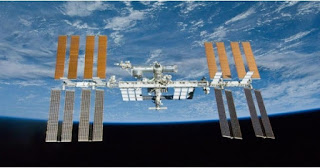The International Space Station: A $150 Billion Marvel of Human Ingenuity
The International Space Station:
A $150 Billion Marvel of Human Ingenuity
Introduction
The International Space Station (ISS) stands as a shining example of humanity's remarkable achievements in space exploration and collaboration. As the largest and most expensive human-made structure in space, the ISS has served as a symbol of international cooperation, scientific advancement, and a stepping stone towards future space exploration endeavors. In this blog, we delve into the fascinating details of the International Space Station, exploring its construction, purpose, scientific contributions, and the financial investment involved.
Construction and Collaboration
The construction of the International Space Station began in 1998, with the collaboration of five space agencies: NASA (United States), Roscosmos (Russia), JAXA (Japan), ESA (European Space Agency), and CSA (Canadian Space Agency). This multinational effort brought together the collective expertise, resources, and technological prowess of multiple nations.
The assembly of the ISS took place over several years, utilizing various launch vehicles and space shuttles. Key components, including the Russian Zarya and Zvezda modules, the American Destiny laboratory, the European Columbus laboratory, and the Japanese Kibo laboratory, were meticulously added, creating a modular structure in orbit around the Earth.
Purpose and Functionality
The ISS serves multiple purposes that contribute to scientific research, technological development, and human space exploration. Its primary objectives include:
1. Scientific Research: The microgravity environment of the ISS offers unparalleled opportunities for scientific experiments in various fields, including biology, physics, astronomy, and human physiology. Astronauts and researchers conduct experiments that help us understand the effects of long-duration space travel on the human body and explore potential solutions for future manned missions to other celestial bodies.
2. Technological Advancements: The ISS serves as a testbed for new technologies and engineering innovations. These include advancements in life support systems, spacecraft docking procedures, and materials science. The knowledge gained from these experiments benefits not only space exploration but also various terrestrial applications.
3. International Collaboration: The ISS fosters collaboration among nations, transcending geopolitical boundaries. It serves as a symbol of unity and cooperation, bringing together astronauts and scientists from around the world to work towards shared goals in space exploration.
Scientific Contributions and Discoveries
The International Space Station has been instrumental in advancing our understanding of the universe and paving the way for future space exploration. Some notable scientific contributions and discoveries made aboard the ISS include:
1. Human Health: Research on the ISS has provided valuable insights into the physiological and psychological effects of living in space. These findings aid in developing countermeasures to mitigate the negative impact of extended space missions on astronauts' health.
2. Microgravity Research: The microgravity environment of the ISS has allowed scientists to conduct experiments that would not be possible on Earth. Studies on combustion, fluid dynamics, and crystal growth have led to breakthroughs in various scientific fields.
3. Space-Based Observations: The ISS provides an exceptional vantage point for observing Earth's surface, atmosphere, and celestial objects. Astronauts capture stunning images and data that contribute to climate research, natural disaster monitoring, and the study of space phenomena.
Financial Investment
The International Space Station represents a significant financial investment, with an estimated cost of around $150 billion. The expenses encompass the design, development, assembly, and maintenance of the station, as well as the costs associated with crew rotation, resupply missions, and scientific experiments.
The funding for the ISS is primarily provided by the participating space agencies. NASA, as the largest contributor, has invested approximately $100 billion, while the other partner agencies have collectively contributed the remaining funds.
Conclusion
The International Space Station stands as a testament to humanity's capacity for scientific exploration, technological innovation, and international collaboration. With its modular design, extensive scientific research capabilities, and multi-ag




Comments
Post a Comment